December 4
As part of the weekly events on international arts education, the 2018 International Symposium on Arts and Culture Education was held on May 23rd at the Culture Tank in Mapo-gu, Seoul under the theme of the “Rediscovering Arts and Culture Education in the New Era: the Fourth Industrial Revolution.”
Encompassing the various themes of this year’s events, the Symposium opened with a performance of people alongside robots entitled “An old future, the future to come: the coexistence of humans and robots.” As part of the opening, UCLA professor and mechanical engineer Dennis Hong, world-renowned for his robotics and mechanisms laboratory, RoMeLa, gave the opening address, “Seeing in a different way, connecting in a new way.” The symposium then proceeded with a discussion panel between Professor Hong and media artist Lee- Yoon-joon.
Curiosity: The Core of Creativity
As KACES Director Yang Hyun-mi had stated in her address, the Mapo-gu Culture Tank was a prime venue for this event, representing its shift from a center for energy stockpiling as part of the 3rd Industrial Revolution to a space for cultural production, as a driving factor for the 4th Industrial Revolution. In serving as such a symbolic venue, the center was not simply a standard lecture hall but transformed into a theater of sorts, welcoming Professor Dennis Hong in the form of a performance as opposed to a simple lecture. The 200 individuals gathered for the event also played two roles, both as audience members enjoying the show and as active contributors sharing their ideas openly and directly with Professor Hong.
Hong’s address focused on the core of creativity, which he expressed through the concept of “seeing things in a different way, and connecting them in a new way.” In other words, he was highlighting the endless possibilities of linking together things that are seemingly unrelated, using his robots as prime examples. One of his robots stood on three legs and was created from the image of braiding hair, while another was based on the joint structure of a now-extinct species of deer. As Hong’s robots showed, unrelated things can be linked to create something extraordinary.
With that being said, how does one go about developing such creative capabilities? According to Hong, it all begins with a childlike curiosity. From this curiosity stems asking the question “Why?” without dismissing it or approaching it with a habitual response, but rather with serious consideration and deep thought. Hong believes that in order to develop and further foster this curiosity, one cannot settle for meeting with those with whom discussing and pondering about ideas are conducted easily. According to him, one need to have interactions where posing ideas, explaining them, and defending them is a challenge. Only in that way can one see things from a different perspective, from the perspective of others. This is a truth that we all most likely already know, yet have difficulty implementing in our daily lives.
An Attempt for the Unknown Future
In all honesty, Hong’s approach to fostering creativity is not a new concept by any means. The problem is that the suggested methods of becoming more creative are not creative at all; after all, they are usually methods that other people have used, and thus lack originality. Even the answer to “how we can foster creativity” is most likely a result of some habitual, tested approach that inadvertently inhibits our own creativity whether we are aware of it or not. If Hong’s lecture had stopped simply at this suggestion, it would have been no different than posing an impossible task to his audience. However, he took it a step further, asking why there was a need to foster creativity in the first place.
In 2000, then Minister of Culture and Tourism Lee Chang-dong, inspired by the United States of America’s so-called “Creative America” program, introduced the concept of “Creative Korea”, a movement which sought to place an emphasis on the value of arts and culture. Following this announcement, the theme of creativity was not only applied to the area of arts and culture, but also to science, the humanities, and even industry. However, why did creativity become considered such a necessity? The answer was partially expressed at the start of Professor Dennis Hong’s speech: to link together things that are seemingly unrelated, thus creating something new. Whatever ends up being newly created is not the end goal, but rather a symbol of endless possibilities and the potential that is found in attempting to imagine a future that is, by definition, unknown. It is that very belief and understanding of endless possibilities that supports the need for fostering creativity. Even if the products of our creation are not immediately of use, there is no way of knowing what potential use they could have in the future. It is in this way that the arts and technology find a common ground, for despite the fact that today’s society might not appreciate or find a need for a given creation, it is only in experiencing failure and continuing with efforts for the future that the arts and technology become one.
The Value of Brilliant Failure
Following Professor Hong’s speech, a special roundtable discussion was held between him and media artist Lee Yoon-joon. Due to their differing backgrounds, many of the questions raised addressed the similarities between the fields of technology and the arts. One of such similarities is the fact that art’s value cannot be determined by the opinions of today’s society alone. In this regard, the two speakers agreed that it was important for society to understand the importance of creativity and the potential value of something, whether it is art or technology, for the future. To that end, Professor Hong emphasized the need for society to become more accepting of failure, and educating individuals to be unafraid of failing. Lee also touched upon her own experiences of artists and how the struggles they must go through from the point of submitting their pieces to the point when their work is actually appreciated. She emphasized that often the problem with this process is that until society shows appreciation for their work, artists and others tend to not see the value in the creation of the work itself.
Both technology and the arts share a common approach in terms of its value. They do not seek immediate satisfaction but rather strive toward greater value sometime, somewhere in the future. However, it is often difficult for the fields of technology and the arts to convince society to be open to the time needed for those failures to take place and for that value to come into fruition. It is these truths that we can ask, if the purpose of creativity is to welcome the potential for future value that we do not realize at the present, then should we not appreciate artistic creativity as having value as it is? In other words, should we not express our appreciation for creative value by being open to failure and waiting for the day when society finds true value in the artistic and technical products of creation?
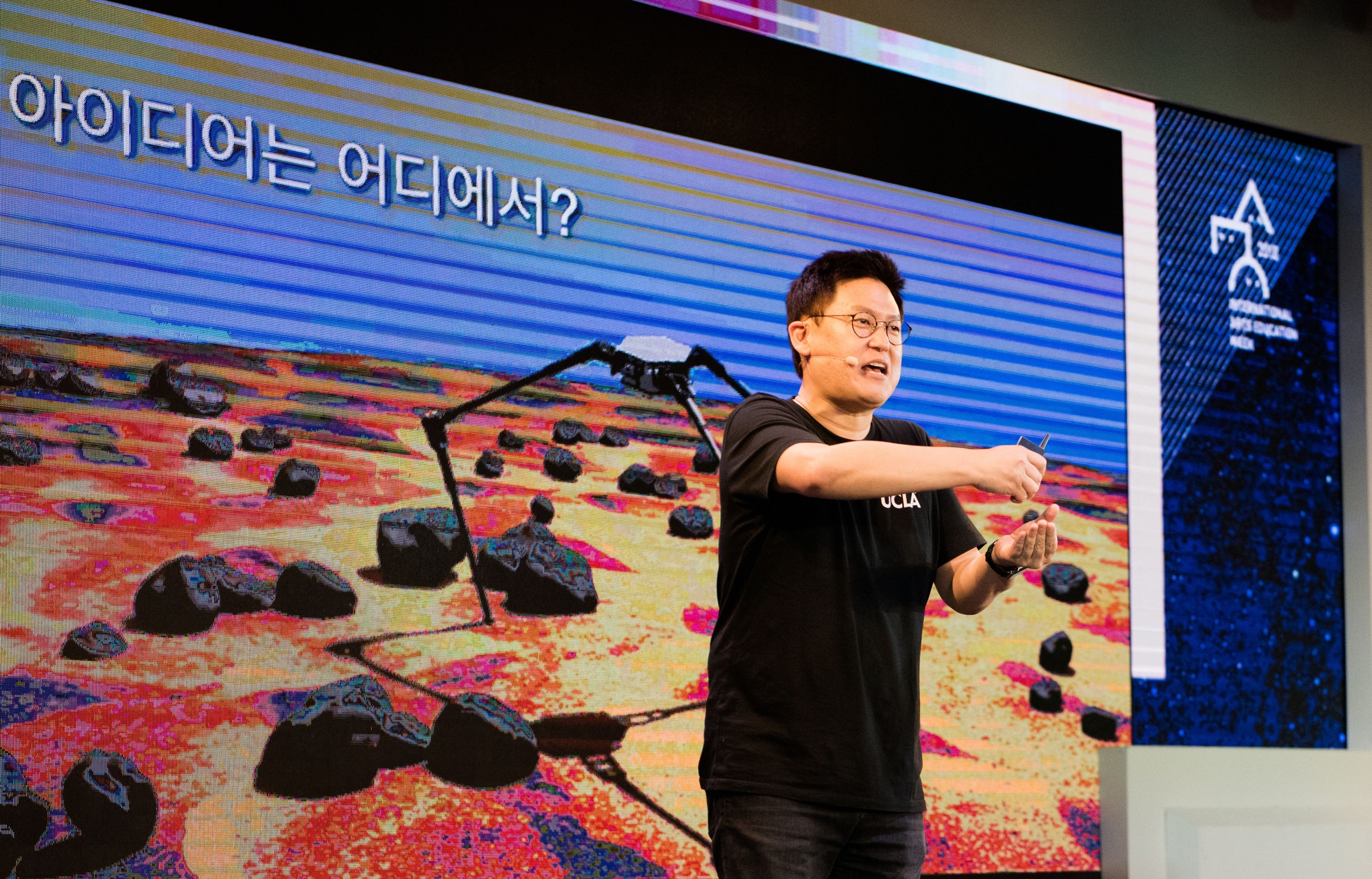
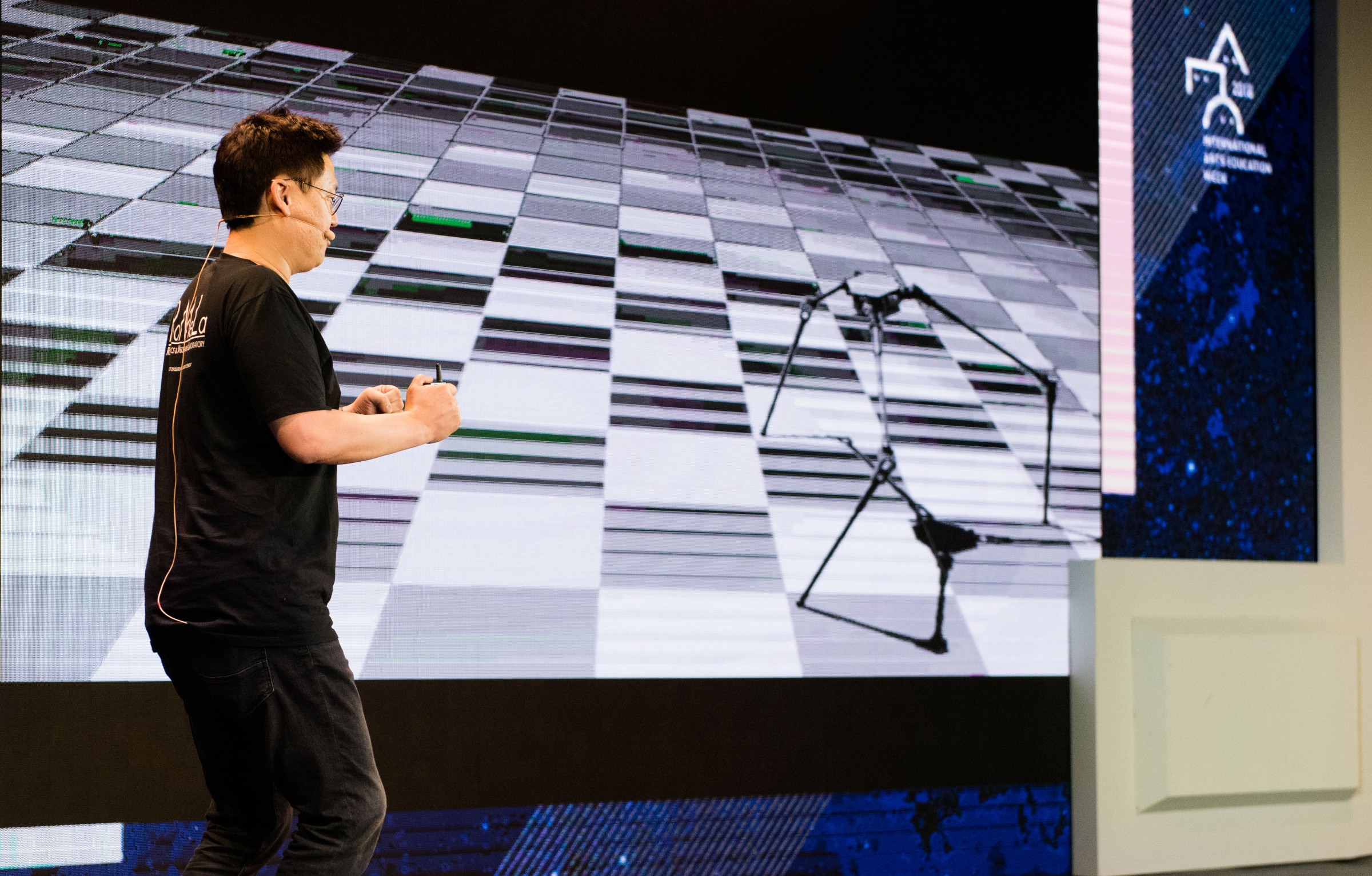

Professor Hong referred to trying things without knowing whether they are possible as research. If we were to apply that terminology to artists, making an attempt without knowing whether or not society will respond positively is simply following one’s calling. Throughout this event, Dennis Hong was speaking not so much as a robotics engineer but more as a proponent of creativity. It is for that reason that he was the perfect individual to present a speech on arts and culture education around the world, despite working in a different field. There is no doubt that his words and his passion will inspire those to find their calling and unleash their own creativity without fear of failure, not for immediate appreciation, but for the hope that someday, somewhere their creativity with the means of culture and arts will be held with more value than they had ever imagined.
*Posted by
Oh Eun-young Oh Eun-young is a collaborative researcher at Daumian and is currently studying Peace Studies at Innsbruck University in Austria, with a focus on the connection between peace and culture. Her goal is to use culture as a medium for creating peace.
As part of the weekly events on international arts education, the 2018 International Symposium Arts and Culture Education was held on May 23rd at the Culture Tank in Mapo-gu, Seoul under the theme of the “Rediscovering Arts and Culture Education in the New Era: the Fourth Industrial Revolution.” The Symposium served as a platform to discuss the role and characteristics of the arts, as well as the necessary direction that arts and culture education need to take in the context of the Fourth Industrial Revolution and the environment of future technology.
The morning session welcomed robotics professor Dennis Hong, who gave the opening speech and participated in a discussion panel, and the afternoon session welcomed six speakers from different backgrounds to discuss the connection between the arts and technology based on their own experiences. Many of those working in arts and culture and related fields were present to show their great interest in this subject, as the term “Fourth Industrial Revolution” has become synonymous with rapid change.

The Meaning and Value of Everlasting Culture and Arts
The afternoon session opened with an address given by Ramiro Osorio Fonseca of Colombia, an expert in culture and arts policies, having served two consecutive terms as Minister of Culture. He has made great strides in the area of arts and culture education, and in his speech he expressed the ever important meaning and value of culture and the arts, using his home country as an example. Fonseca believes that arts education serves as an important foundation for civil society, and for that reason has continued to fight for policies supporting such programs.
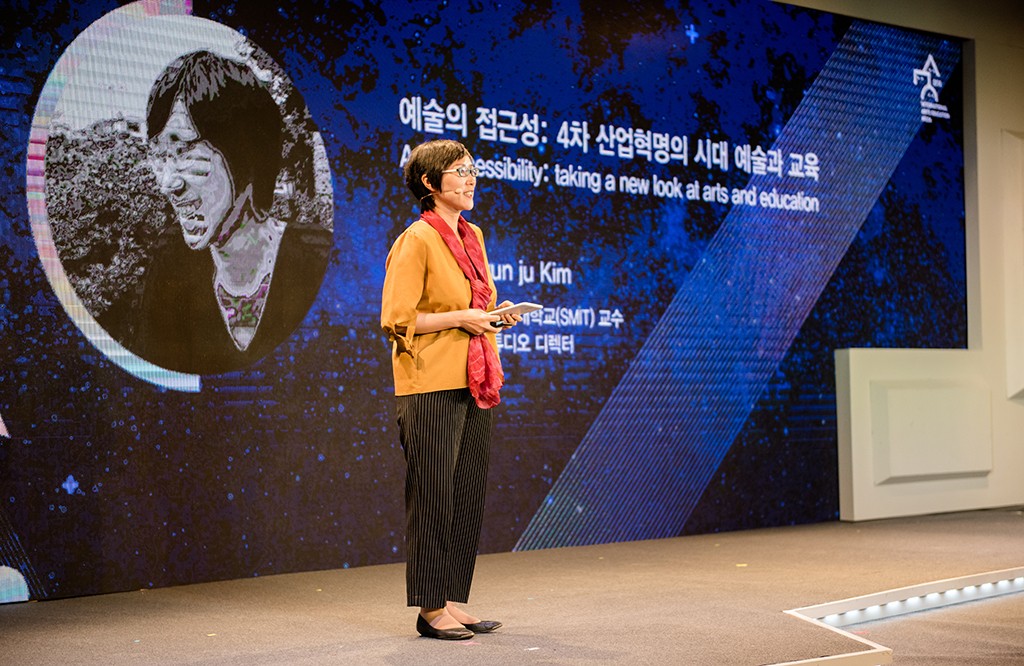
The next speaker was Seoul Media University’s Professor Kim Hyun-joo. Kim also made an appearance in the opening performance of the morning session, collaborating with the YulHyul Arts Group to put on a robot arts show. Professor Kim spoke of three perspectives regarding the approach of arts and culture education within the context of the Fourth Industrial Revolution. First, she discussed the details and goals of incorporating technology in arts education. Second, she mentioned the importance of discussing the criticisms of a techno-society. Third, she also discussed ways to enhance creativity and problem solving skills to a society that is so connected and intelligent. Professor Kim then proceeded to introduce the artbotics project currently underway at the University of Massachusetts Lowell, as well as the collaborative educational programs that are currently being developed at Kim’s home university.
Professor Kim also emphasized the importance of straying away from linear approaches to the arts in the age of the Fourth Industrial Revolution and further went on to call upon the need for dynamic and proactive thinkers. In order to foster this sort of problem solving capability, she suggested that arts and culture education offered at schools and culture centers will need to include various resources and create a flexible network to provide opportunities for creativity in the arts.
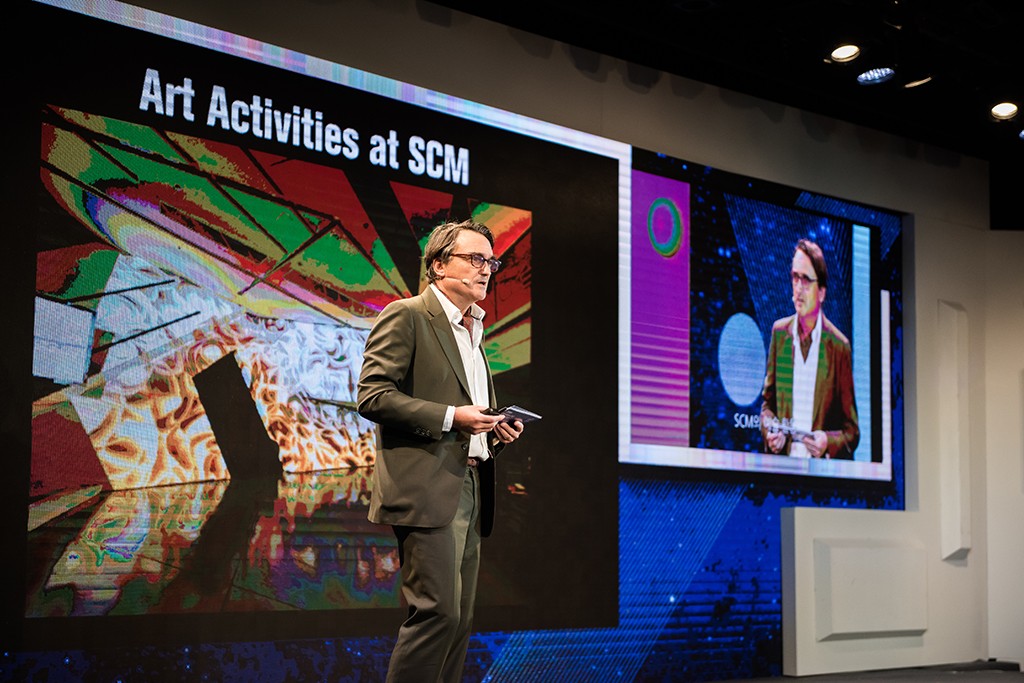
The next speaker was Richard Allen, Dean of the School of Creative Media at City University in Hong Kong. Dr. Allen discussed the changes happening at the points in society where the arts and technology meet. This year marks the 20th anniversary of the Media Arts School, which was first established to help foster talent in computer-based media art. It is currently the place of learning for nearly 1,000 individuals, boasting the largest body of students in this program within the Asian region. Dr. Allen proceeded to outline in detail the Bachelor of Arts & Science (BAS) degree that was introduced in 2012. The curriculum for the BAS program was developed with five principles of education in mind.
The first principle is creative interdisciplinary between arts and science. The second emphasizes participatory science for the students. The third emphasizes that classes be conducted through learning by doing and hands on activities. The Introduction to the Science for Artists class was first introduced as a lecture-style class before this principle was applied; now it is conducted through in-class experiments led by an artist. The fourth principle is collaborative learning. Finally, the fifth principle emphasizes the creation of new media.
Arts in between People and Technology
The next speaker in the afternoon session was Takuya Takei, who currently serves as the director of teamLab in the Asian region. Takei discussed the changes surrounding the environment of creation at the frontline of where technology and the arts collide. TeamLab is a creative organization that consists of over 400 creative individuals of different backgrounds, including programmers, animators, artists, and architectural engineers. The organization’s main task involves constantly testing the possibilities of digital art. These creative engineers consider how they can use immersive digital art to reach their audiences and impact them in various ways with their creations, with a focus on creating brand new experiences to share with the world.

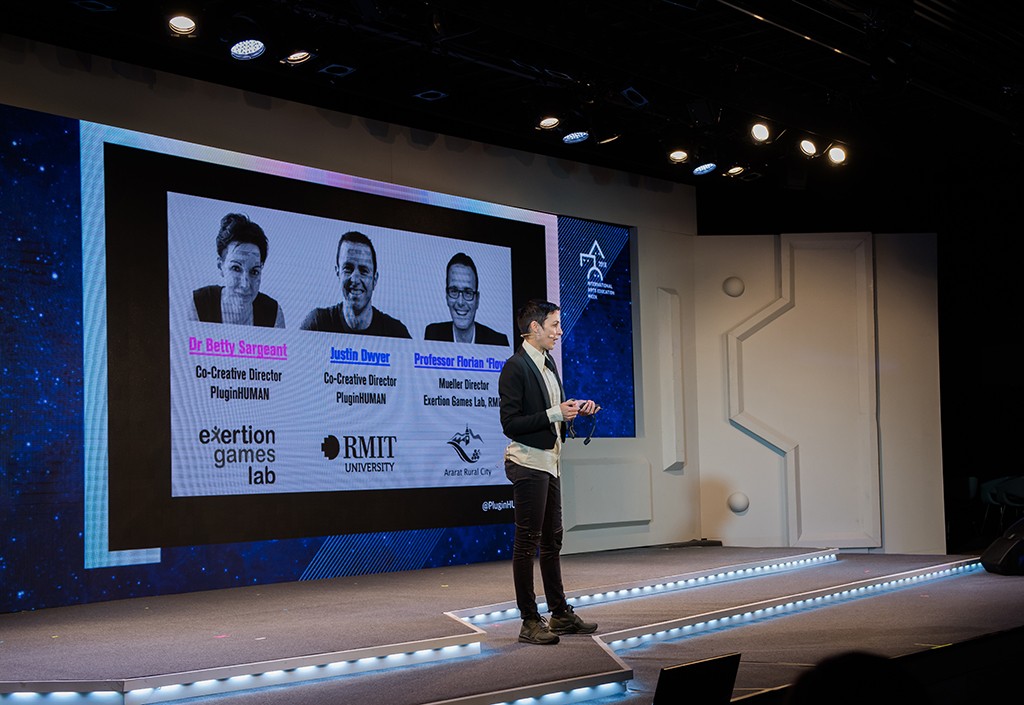
The next speakers were Justin Dwyer and Better Sergeant of PluginHUMAN, a media art group that uses technology to experiment on ways to expand upon the field of art. Rather than creating new artistic experiences, the group aims to find ways to use art to change people’s lives for the better. For example, their Storytelling Machine is meant to help those who are not comfortable with social interaction by taking an input of their small details and giving an output of a grand story for people to enjoy. In this way, their creation encourages those who are more timid to not fear technology and become more comfortable in their skin. Furthermore, they also developed the Brainwave Art Project, which uses EEG technology to keep track of an individual’s sleeping patterns. It then uses the data to create a visual representation of the effects of sleep, aiding in educating the public about the importance of sleep while also keeping track of one’s health condition.
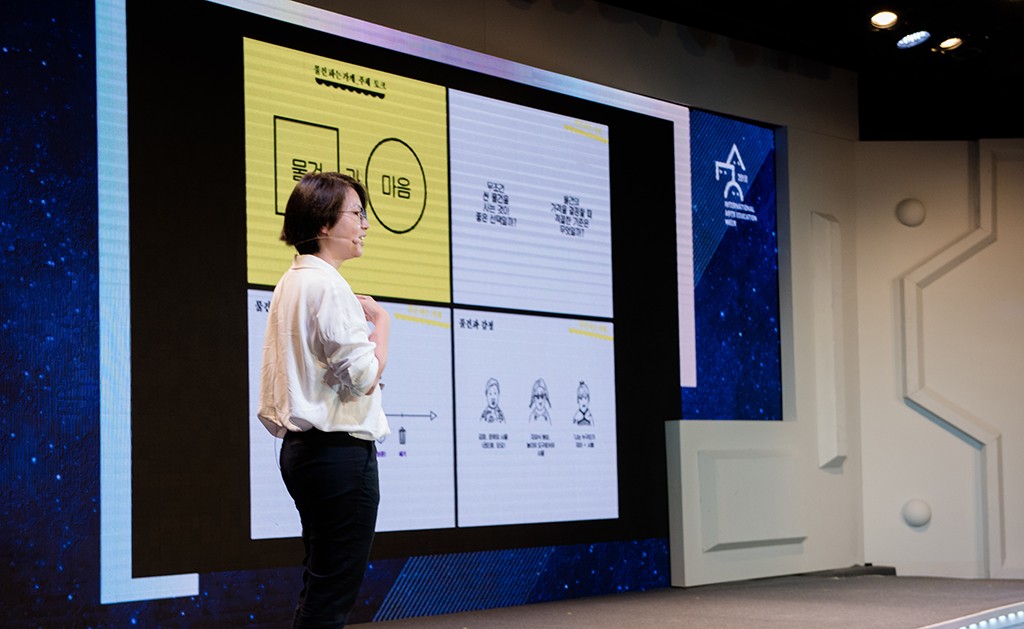
The final speaker for the afternoon session was Park Ji-eun, President of Reliquum. She discussed the importance of playing around and creating new things as a means of better understanding one’s surroundings, technology, and art. She used her own personal experiences at Reliquum and how her organization has developed community-based methods to emphasize that technology and art are things that are not only for those artistically talented but everyone can understand and that everyone can attempt and gain. She made it a point to remind everyone that arts and technology is something that everyone is connected to in some way from within, and accepting that and taking a proper approach to this truth is what is most important.
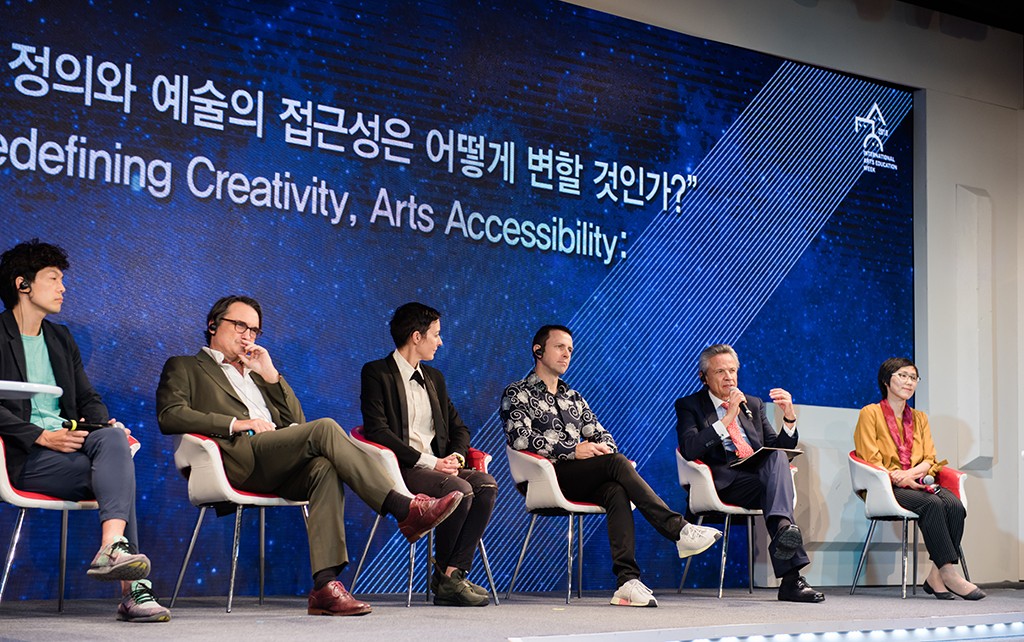
A Rapidly Changing Environment and the Demands That Follow
The joint discussion panel covered a wide range of topics, including the redefinition of creativity in the context of a changing society, the change in capacity and roles of culture and arts educators and creators, and the role of the government in all of these aspects. The speakers emphasized that, despite the fact that we live in an age when AI can paint paintings and compose music, they still lack the capacity to autonomously select their own purpose; this is something that is only borne of human creativity. Most of the speakers agreed that in order to meet the increasingly high demands of a changing environment, artists and culture and arts educators would need to build a greater understanding of and be open to more proactively implementing technology in their roles. These individuals would also have to work closely with a variety of different individuals to build value and even a business mindset. According to the speakers, only by adapting in this complex manner would artists and culture and arts educators be able to fulfill their goals in a rapidly changing society. Finally, the speakers mentioned that in order to build this capacity and facilitate such adaptive changes, the government would need to help develop a long-term plan with ongoing support.
This symposium served as a platform for speakers and participants to discuss and learn about the how the field of arts and culture education needs to prepare for the rapid changes that will follow the Fourth Industrial Revolution, as well as what the possibilities that these changes can bring and what type of future they can create. One can only hope that the discussions held during this symposium will encourage individuals in relevant fields to actively discuss, prepare, and study for the future to come.
*Posted by
Kim Joo-seob Professor Kim is currently part of the Arts and Technology Department at Sogang University. He is not only an educator, but also a researcher, engineer, and artist with a focus on the intersecting ties between the humanities, art, and technology. Professor Kim’s research focuses on new creative applications of computing and creating new value in the field of the arts. He has held the position of Department Director consecutively, and is making efforts to foster future creators of the next generation as the Director of the Creative Minds Foundation under the theme of “Humanities, Arts, and Technology.” Professor Kim served as the moderator for the International Symposium this year.